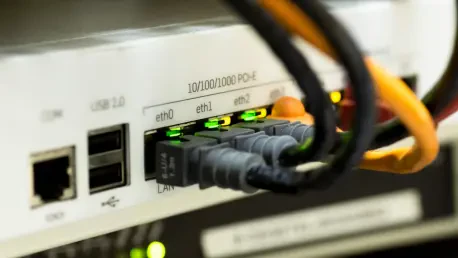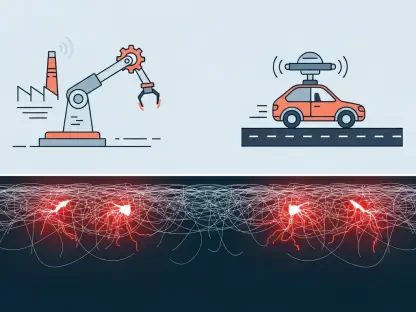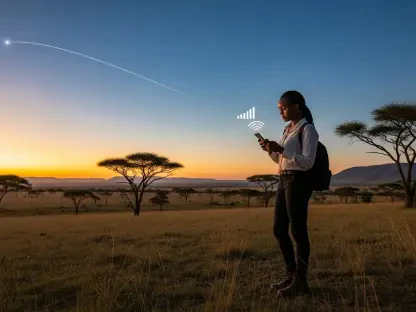In a groundbreaking move to address the digital divide, Michigan has embarked on an ambitious journey to enhance internet connectivity across its unserved and underserved regions with a substantial $87 million investment, promising to reshape the landscape of opportunity for thousands of residents. This initiative, driven by a desperate need to provide reliable high-speed internet to communities long left behind in the digital age, is known as the NTIA Middle Mile Broadband Infrastructure Project (IMPACC). It is a collaborative effort between Peninsula Fiber Network (PFN), 123NET, and state officials, backed by federal funding. The project not only aims to build critical infrastructure but also seeks to redefine internet access as a fundamental right rather than a luxury, sparking hope for economic growth and social equity. As construction begins, the spotlight shines on how this effort could serve as a model for bridging connectivity gaps nationwide.
Building the Foundation for Connectivity
Laying the Groundwork with Middle Mile Infrastructure
The IMPACC project focuses on constructing vital middle mile infrastructure, a backbone that will enable broader high-speed internet access throughout Michigan. This $87 million initiative, supported by a $61.2 million federal grant from the National Telecommunications and Information Administration (NTIA) and a $26 million contribution from PFN and 123NET, targets three major routes to bolster the state’s digital network. These routes include a mix of underwater and on-land fiber connections, stretching from Benton Harbor to Chicago, Gulliver to Beaver Island, and Port Huron to Flint. The strategic design of these pathways aims to ensure resiliency and redundancy, creating a robust system that can withstand disruptions and support wholesale broadband services for last-mile providers. By prioritizing such infrastructure, the project sets the stage for local internet service providers to connect thousands of homes and businesses, particularly in rural and underserved areas where access has historically been limited or nonexistent.
Targeting Specific Regions for Maximum Impact
A key component of this broadband expansion is its focus on specific underserved regions, ensuring that the benefits reach those most in need. For instance, the 111-mile Route 3 from Port Huron to Flint, where construction has already started, is expected to connect over 2,500 homes and businesses across Lapeer, Macomb, St. Clair, and Genesee counties. With an anticipated completion timeline of 18 months, this segment alone represents a significant step toward closing the connectivity gap in Southeast Michigan. Meanwhile, other routes address unique geographic challenges, such as underwater fiber links to remote areas like Beaver Island, demonstrating a commitment to inclusivity. This targeted approach underscores a deliberate effort to prioritize communities that have long struggled with inadequate internet, paving the way for enhanced access to education, healthcare, and job opportunities that depend on reliable digital connections in today’s economy.
Bridging the Digital Divide Through Collaboration
Public-Private Partnerships Driving Progress
One of the standout features of this broadband initiative is the powerful collaboration between public and private entities, showcasing a unified front against digital disparity. The partnership between PFN, 123NET, and state officials exemplifies how combined resources and expertise can tackle large-scale infrastructure challenges. This synergy was evident during the groundbreaking event in Davison Township, where local leaders and elected officials voiced strong support for the project’s goals. State Representative David Martin, a vocal advocate for rural connectivity, highlighted the economic and social advantages that improved internet access will bring to his constituents. Such endorsements reflect a broader consensus on the urgency of broadband expansion, positioning this effort as a cornerstone of Michigan’s strategy for equitable growth. The blending of federal grants with private investment further ensures that the project remains sustainable and scalable over time.
Voices of Impact and Vision for the Future
Diverse perspectives from stakeholders paint a comprehensive picture of the project’s potential to transform lives across Michigan. Leadership from PFN and 123NET, including figures like Cory Heigl and Chuck Irvin, emphasize the empowering role of this infrastructure in enabling individuals and small businesses to thrive in a digital world. Their focus is on the practical benefits, such as supporting online learning for students and expanding market reach for entrepreneurs. In contrast, state officials like Lt. Governor Garlin Gilchrist frame the initiative within a larger vision of economic competitiveness, stressing how connected communities are better equipped to succeed in a global economy. This blend of viewpoints illustrates a shared understanding of broadband’s multifaceted importance, from personal empowerment to statewide progress. Together, these voices reinforce the notion that reliable internet is no longer optional but essential for fostering opportunity and resilience in every corner of the state.
Reflecting on a Milestone Achievement
A Step Forward in Digital Equity
Looking back, the launch of this $87 million broadband project marked a pivotal moment in Michigan’s journey toward digital equity. The ceremonial start in Davison Township symbolized more than just the beginning of construction; it represented a collective resolve to ensure that no community is left disconnected. The strategic focus on middle mile infrastructure, coupled with targeted regional outreach, laid a solid foundation for addressing long-standing disparities in internet access. Stakeholders from various sectors came together, their shared commitment evident in every speech and gesture during the event. This initiative stood as a testament to what could be achieved when federal support, private innovation, and local advocacy aligned toward a common goal. The impact of connecting over 2,500 homes and businesses in Southeast Michigan alone highlighted the tangible difference this project began to make in people’s lives.
Looking Ahead to Sustainable Solutions
As the dust settled on the groundbreaking event, attention turned to the next steps for ensuring the project’s long-term success. Timely execution of the construction phases, especially for the intricate routes involving underwater fiber, emerged as a critical priority. Equally important was the need to forge strong partnerships with last-mile providers to guarantee that the infrastructure translated into accessible services for end users. State and private entities needed to continue monitoring progress, adapting to challenges, and exploring additional funding opportunities to expand the network further. Community engagement also played a vital role, as educating residents about available services could maximize adoption rates. By maintaining this momentum and focusing on sustainable solutions, Michigan positioned itself to not only bridge the digital divide but also inspire similar efforts in other states grappling with connectivity challenges.









